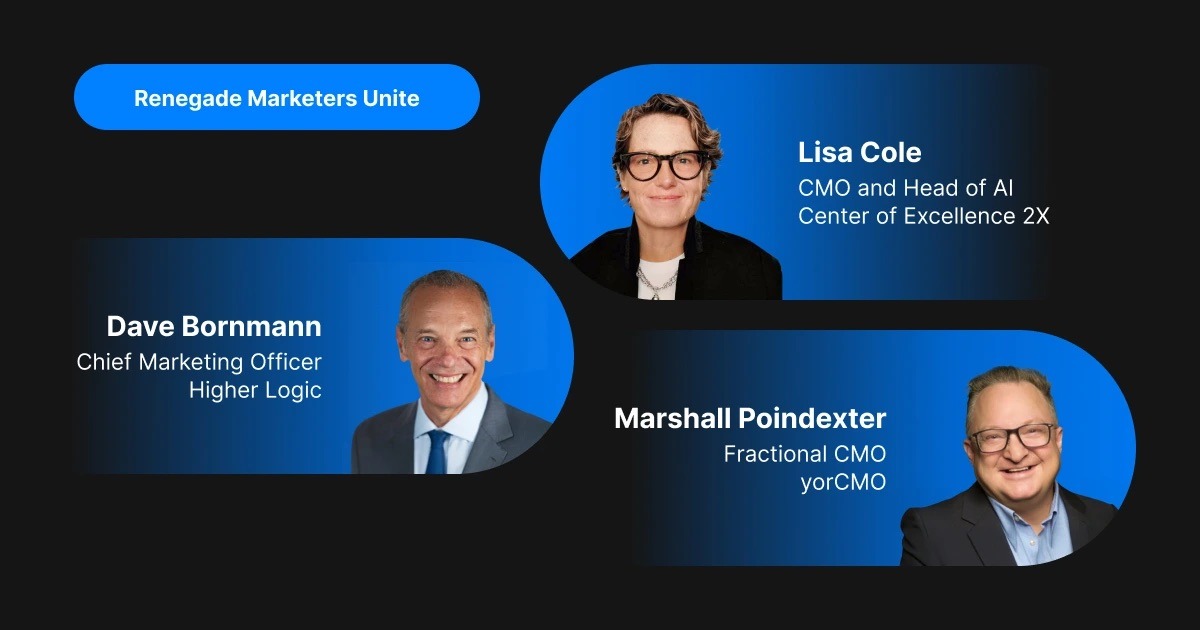June 8, 2021 | Blog
Quick check: are you seeing these red flags in your marketing?

Even though marketing plays a crucial role in generating leads, accelerating the pipeline, and driving more revenue, it’s hard to shake off its reputation as a cost center.
Stagnant marketing budgets, the lowest they’ve been since 2014 according to Gartner, are making it even more challenging for marketing departments to deliver growth. To get more impact and productivity out of the same budget, marketing leaders need to ensure that strategies are aligned with business goals, while striking a balance between marketing spend and costs per opportunity as they continue to reevaluate and optimize these efforts.
To develop strategies that can drive ROI and help achieve full marketing efficiency (while juggling creative requirements, budget limits, and channel decisions), it’s important to root out any red flags that prevent you from executing marketing efforts in the most cost-effective manner.
Here are the five most important questions to ask.
1. Are your sales and marketing teams working with different data sets?
Data silos are a serious deterrent to marketing efforts as you won’t be able to gain full insights into your campaign performance. With unified data, you will be able to fully understand the effectiveness of your campaigns and how different strategies might work in the future. Customer insights are also a must-have for marketers seeking to personalize communications, which can foster greater customer loyalty that drives increased revenue. Companies that utilize their data holistically are well-positioned to achieve success.
2. Is your marketing strategy driven solely by lead generation?
Marketing can deliver more than just lead generation. While capturing leads is important, there are opportunities to play a bigger role in accelerating the pipeline by focusing on the entire funnel instead of just the top. Pipeline marketing requires both sales and marketing teams to work hand in hand, nurturing prospects through the entire funnel until they are converted into customers. Marketing can deliver the personalized communication that is key to creating great experiences beyond the sale and throughout the customer lifecycle.
3. Are you spending most of your ad budget chasing vanity metrics?
Vanity metrics like web traffic, impressions and clicks may look great, but they don’t carry real value for your business. With a limited budget, you want your strategies to create valuable impact, so you should concentrate your efforts on actionable metrics like cost per lead (CPL), conversion rates, and lead quality. These are metrics that can help you generate more opportunities, measure and improve customer engagement, and increase sales. Rework your strategies so that spending is focused on delivering pipeline and creating revenue impact.
4. Does your content only appear on your website?
It’s not enough to have your content up on your website because regardless of how good your content is, not many people visit websites on their own. You’ve spent a tremendous amount of effort to create articles and infographics while employing good SEO practices, but these take time to show results. One highly effective—but underutilized—method to get your content out there is content syndication. When your content appears on another site, you gain more visibility to a much wider audience a lot quicker. By leveraging intent data, content syndication gets your content promoted to a target audience who are already actively searching for what you sell—giving you quality leads that your sales team can close effortlessly.
5. Do you know your visitor-to-qualified lead conversion rate?
To evaluate how effectively your content marketing strategies are persuading website visitors to become potential clients, you need to know your visitor-to-qualified lead conversion rate. Creating impactful content is just the first step of converting visitors into potential customers. Priming that content for lead generation is the next step and can be done easily, like requiring readers to provide their contact information in exchange for gated content, or encouraging visitors to fill in their emails when asking questions through a chatbot for follow-up communication. The key is to optimize every page of your website to make it more visible to the target audience and search engines.
Elevate Your Marketing Efforts with Marketing as a Service (MaaS)
Finding the right balance between creating valuable business impact and operating within budget limitations is challenging for any leader. That’s where MaaS comes in to change how you can deliver marketing impact that’s both effective and cost-efficient.
An offshore MaaS partner like 2X helps address these problems by offering the dedicated focus of an in-house team at the average cost model of a freelancer. Our team brings you experienced professional marketers, SEO specialists, developers, writers, and designers that help you deliver efficient, sustainable, and scalable solutions.
The Definitive Guide to Marketing as a Service offers comprehensive information about the MaaS model. In it, you’ll find case studies, CMO insights, assessment questionnaires, and answers to how MaaS can help transform your marketing function. Download the ebook to learn more!



